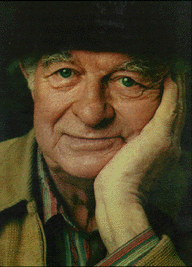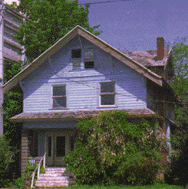| Dr. Linus Pauling |
| Building On His Life And Legacy |
| Architect's Vision for a Pauling Memorial |

| Linus Pauling is the only individual in history to have won two unshared Nobel Prizes: for Chemistry in 1954 and the Peace Prize 1962. Many people know him for his more recent important work in micronutrient research on the role of Vitamin C in human health and longevity. Linus Pauling was born in 1901, on the outskirts of Portland in the small community of Oswego. When the was five, the family moved to Condon, Oregon. This was where his mother had been born, the daughter of a prominent town father. Linus' father had recognized that his son was intellectually exceptional. There is a famous letter to the Oregonian where the father asks for advice on a reading list for his young son. Shortly thereafter, when Linus was only 9 years old, suddenly and unexpectedly, his father died, of a perforated ulcer. This was the beginning of a long period of hardship and turmoil for the family. Within a few months Linus's mother purchased the house near 39th Avenue and Hawthorne Boulevard in Southeast Portland. They supported themselves running this as a rooming house. Linus attended the local grade school, went on the Washington High School and received a degree in Chemical Engineering from Oregon Agricultural College (now Oregon State University). After OSU, Linus moved on to Cal Tech where he spent the most of his academic career. After receiving his Ph.D. form Cal Tech, he spent a year in Europe with the founders of the new quantum mechanics: Bohr, Heisenberg and Schrodinger. Over the next decade Linus transformed his field, and laid the foundations of modern chemistry. Before Pauling chemistry was a hodgepodge of empirical hits and misses, dis-unified by a collection of piecemeal, semicoherent theories. Pauling's famous book: The Nature of the Chemical Bond provided the new unifying basis that established the golden age of systematic chemistry. In the next two decades Pauling extended his investigations into biology. Here, it is no exaggeration to state that Linus Pauling founded modern molecular biology. Except for having his passport revoked by the government, for his political opposition to atmospheric nuclear testing, many believe that he would have discovered the structure of the DNA molecule; and we never would have heard of Watson and Crick. Linus was writing about human freedom and dignity about democracy and political rights at sixteen. In his early years one might have guessed that he would become a John Locke or Rousseau. With his lifelong partner Ava Helen, Pauling took courageous stands on important issues, particularly those involving science, technology and the future of humanity. And it was for this work that he received the Peace Prize. In the last two decades of his long and fruitful life, Linus continued to explore and publish in many of his established fields of research. But, as was his passion, he extended himself into the new. His investigations into the molecular basis of health and longevity were summarized in his popular book: How to Feel Better and Live Longer. But new ideas are rarely accepted quickly in the establish the Linus Pauling Institute for Science and Medicine where he carried on micronutrient research for almost twenty years. |

| Linus Pauling's Boyhood Home 3945 SE Hawthorne Blvd Portland Oregon 97214 |